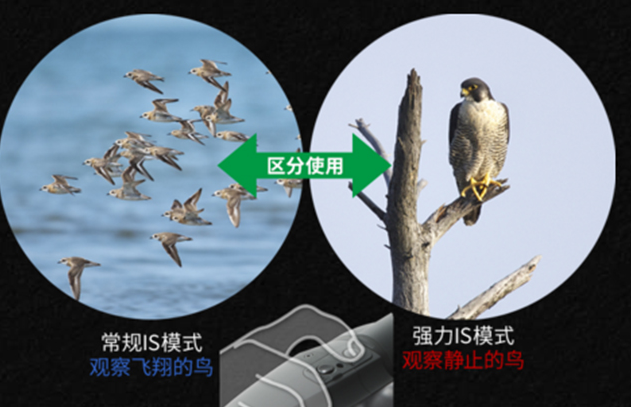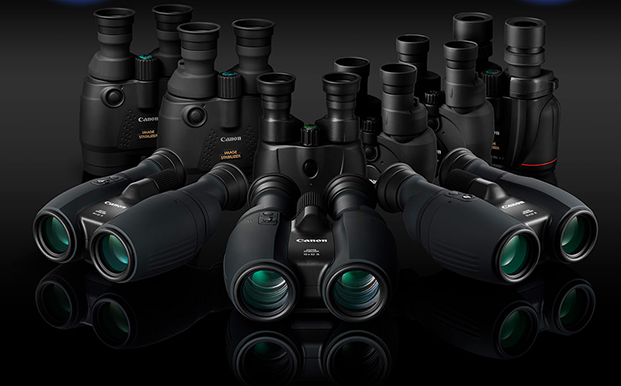Over the past three years, the power sector has seen a year-on-year increase in tenders and purchases of Canon image-stabilized binoculars, demonstrating a rapid growth trend. Canon binoculars are considered high-end and relatively expensive in their category. So, what exactly drives this strong demand for these expensive Canon binoculars? As a leading supplier of rangefinders, binoculars, digital measurement and control systems, and other line inspection and measurement equipment to the power sector, Ouka has analyzed both the macro market and objective theoretical data to conclude that Canon image-stabilized binoculars are the most suitable product for State Grid's power sector.

Canon's image-stabilized binoculars offer more practical optical technology.
Power line inspections are conducted in challenging environments. High-voltage power lines are often located atop steep mountain peaks, so a simple, standard telescope is not enough. The farther the target, the higher the magnification required, which increases the risk of camera shake and makes observation more difficult. Larger objective lens diameters directly increase the size of the binocular, making it more burdensome and inconvenient to use during mountain inspections. Therefore, binoculars with image stabilization (IS) technology make inspections more efficient! Canon binoculars feature patented IS image stabilization technology, which compensates for camera shake and ensures stable images even at high magnifications, ensuring clear observation.

Nine models built on 22 years of sophisticated optical image stabilization technology.
Generally, binoculars with magnifications exceeding 8x are susceptible to camera shake. Canon introduced optical image stabilization lenses as early as 1995, and Canon has incorporated its proven IS technology into its binoculars. Leveraging optical technologies accumulated during lens development, hand-shake compensation significantly improves binocular performance, suppressing hand shake when using binoculars. High-magnification binoculars, which typically require a tripod for use, can now be used handheld.

Technology 1: Panning IS Image Stabilizer
The panning IS image stabilizer is the same as that used in EF lenses for SLR cameras. A vibration gyroscope detects the direction and amount of hand shake and stabilizes the image by moving the compensation lens in the direction that eliminates the shake. Leveraging the technology accumulated in EF lenses, this lens compensates for hand shake, achieving sharp images with minimal color fading. Excessive hand shake can blur the image, making it difficult to clearly see the subject. Hand-shake compensation stabilizes the image, ensuring that both movement and details are clear and distinct. New models supported: 10x32 IS, 12x32 IS, and 14x32 IS.
Technology 2: Vari-angle Prism IS Image Stabilizer
The vari-angle prism uses a bellows-shaped structure with lenses at both ends. A fluid with the same refractive index as the lenses is filled inside. The fluid changes shape according to hand shake, adjusting the optical axis angle for image stabilization. Compatible Models: 10x42 IS WP, 18x50 IS All-Weather, 15x50 IS All-Weather, 12x36 IS III, 10x30 IS II
Technology 3: Tilt IS Image Stabilizer
Designed for compact, lightweight binoculars, the Tilt IS Image Stabilizer tilts up, down, left, and right based on the amount of shake, using a gimbal mechanism to compensate for camera shake and maintain image stability. Compatible Model: 8x25 IS
Telescope Technology Integrating Professional Optical Wisdom
All nine Canon binoculars feature a flattener (which compensates for image curvature that causes blur in the periphery of the lens' field of view, ensuring clear observation) and a Super Spectrum coating (which suppresses color casts for high-contrast images).
In addition, the 10x42 L IS WP, 18x50 IS All-Weather, and 15x50 IS All-Weather have added UD (Extra-Low Dispersion) glass. The objective lenses utilize UD (Extra-Low Dispersion) glass to effectively suppress chromatic aberration. The high-end 10x42 L IS WP model boasts high water resistance, allowing it to be washed clean even if it gets dirty during outdoor use. Its waterproof seal prevents mold and mildew from forming on the lenses and prisms. (Note: The 10x42 L IS WP only withstands water ingress at a depth of approximately 1 meter for approximately 30 minutes. It cannot be used underwater.) The 18x50 IS ALL WEATHER and 15x50 IS ALL WEATHER models are weather-resistant, resistant to water droplets and raindrops. Their waterproof seal prevents mold and mildew on the lenses and prisms. They are unaffected by weather changes and can be used in all weather conditions.
After reading this comprehensive overview of the performance of Canon stabilized binoculars, you'll understand why State Grid, a power company that frequently conducts wiring inspections in the field, has chosen Canon binoculars in large quantities! Because they're professional, they're used! Finally, after reading this analysis, if you're interested in Canon binoculars, you can directly contact Wuhan Ouka, an authorized Canon official distributor! (This article is originally edited by Oka Technology. Reprinting without authorization is strictly prohibited! Violators will be held accountable!)


